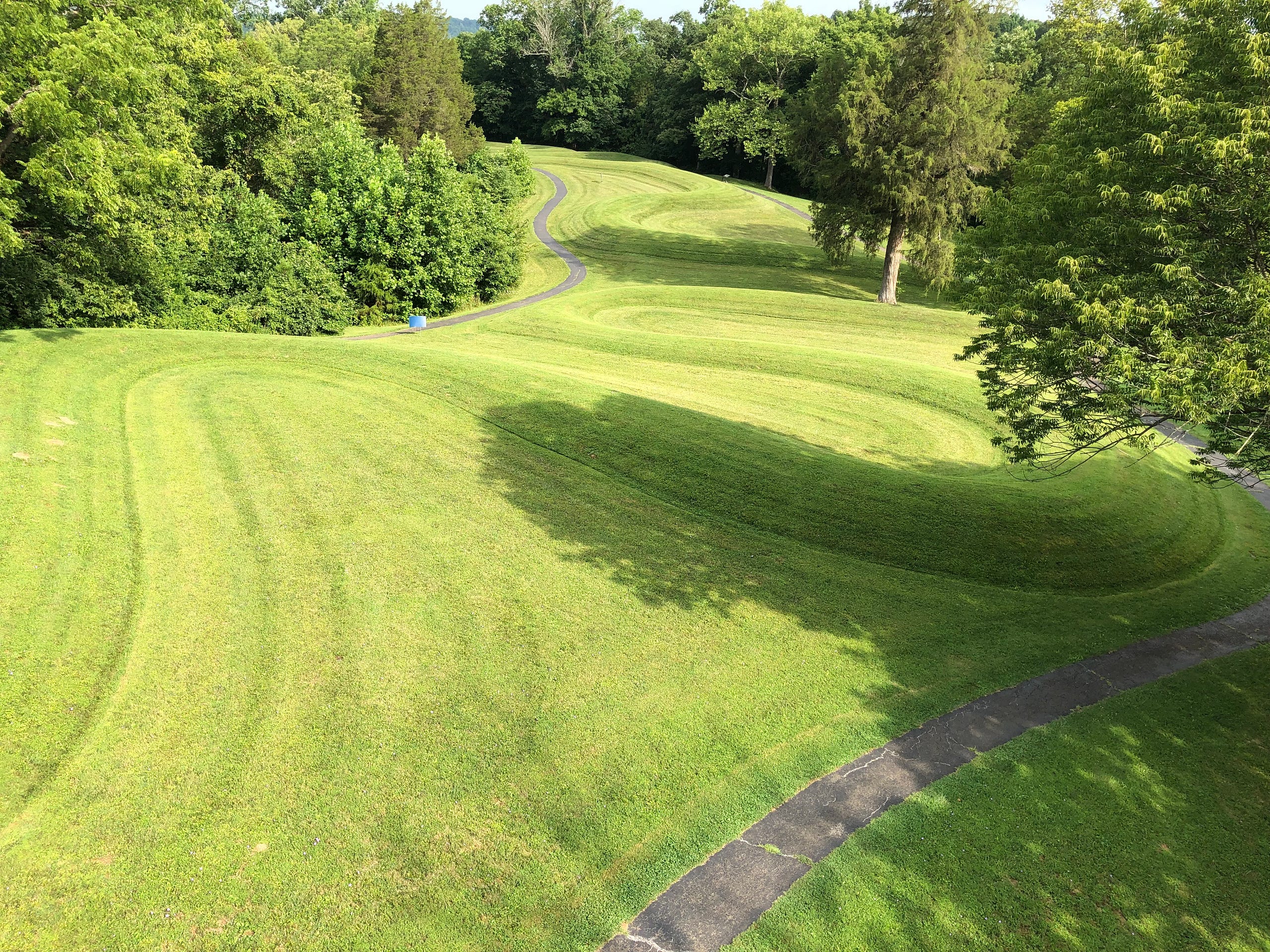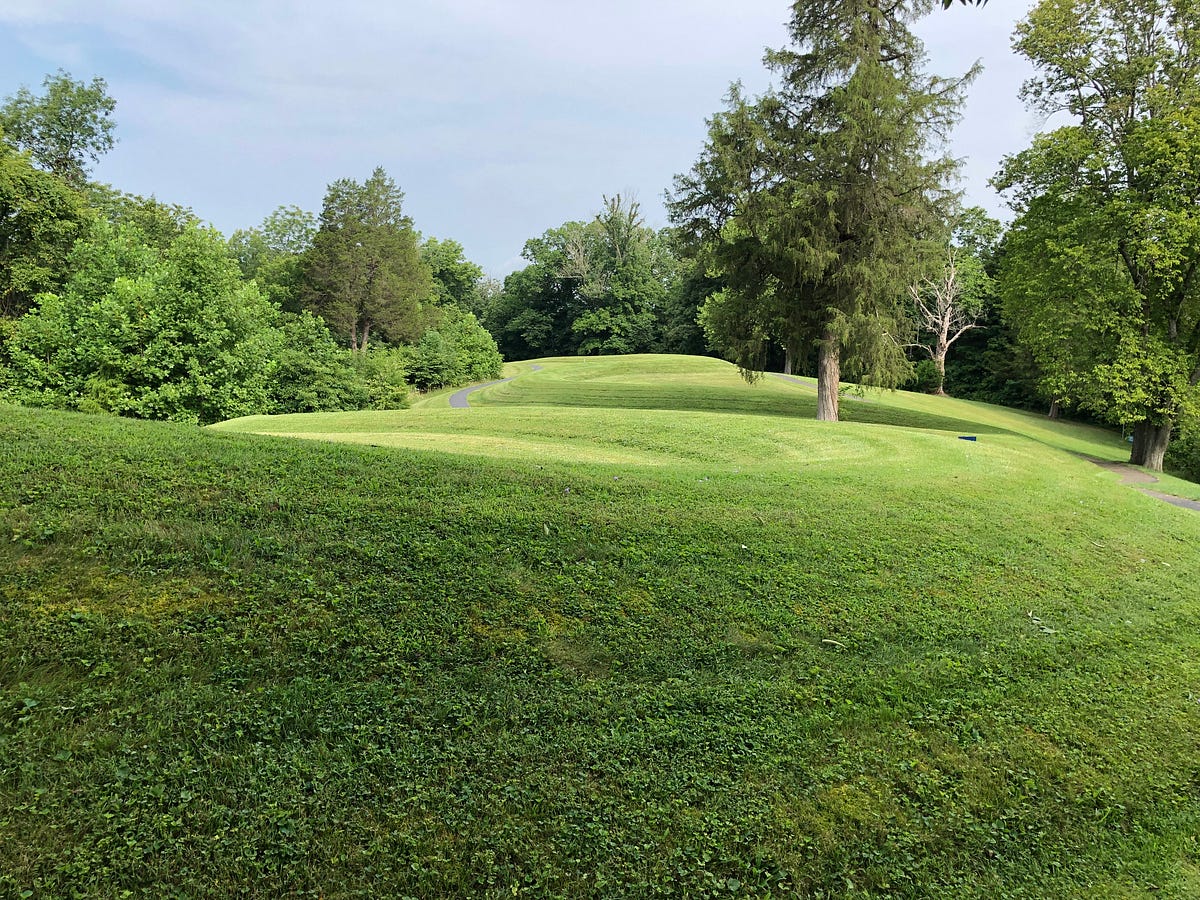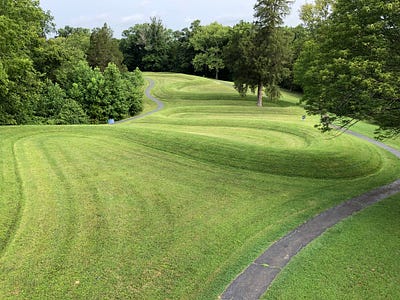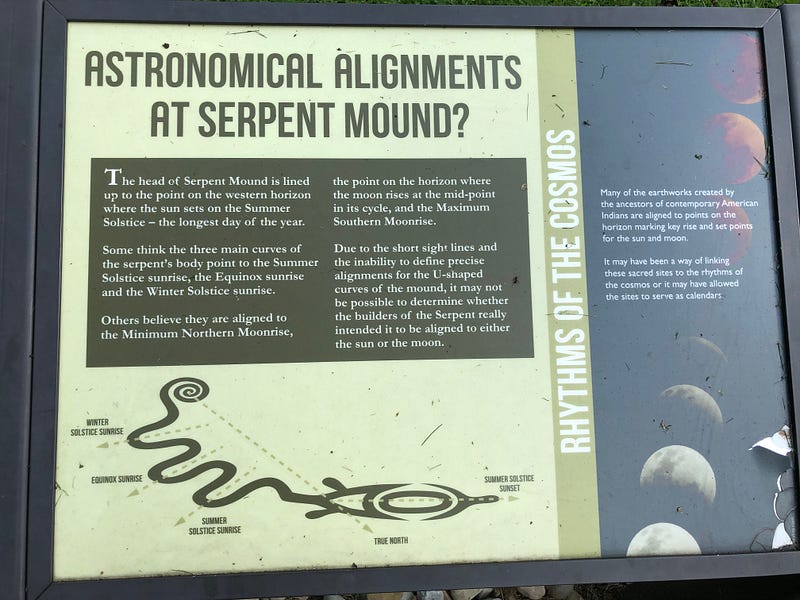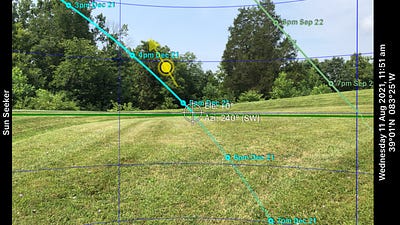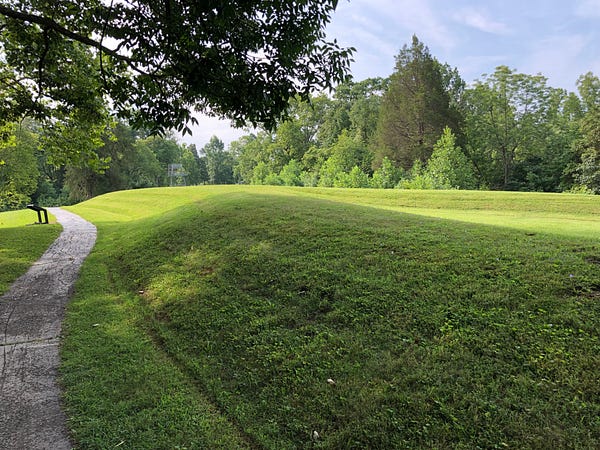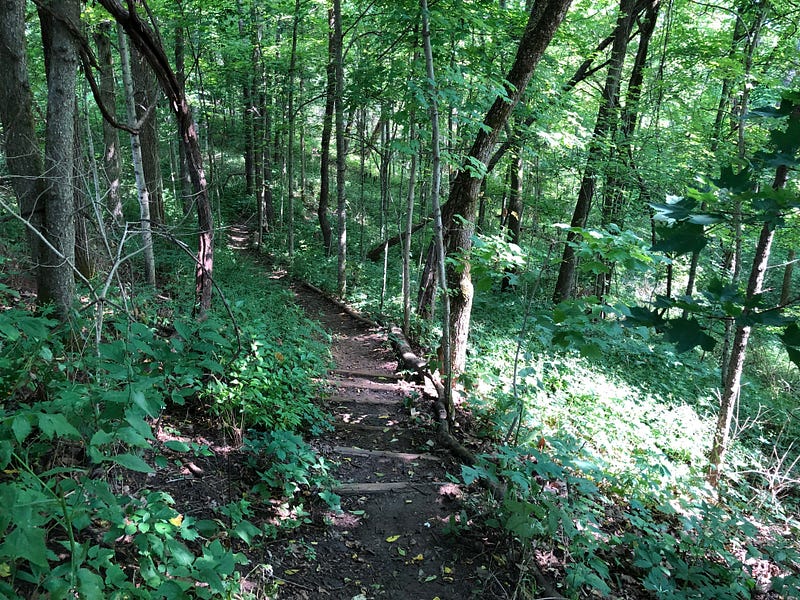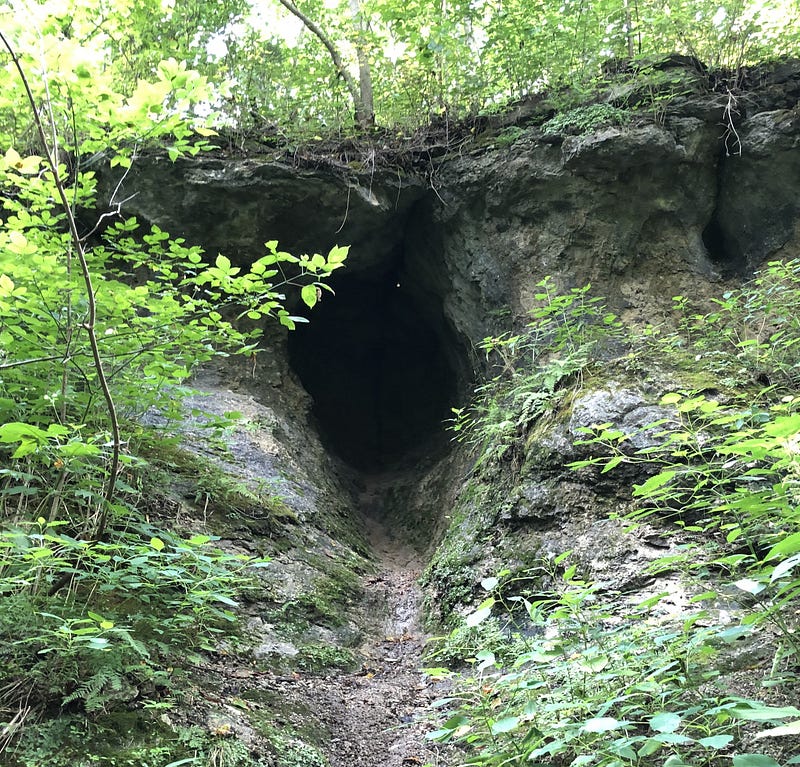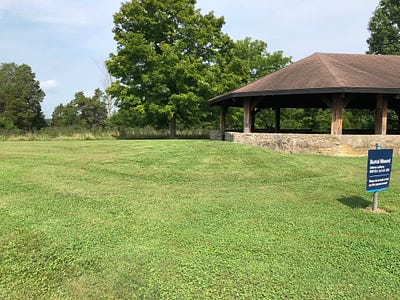Exploring the World’s Largest Serpent Effigy — in Ohio
There is a Serpent upon the hill.
Serpent Mound.
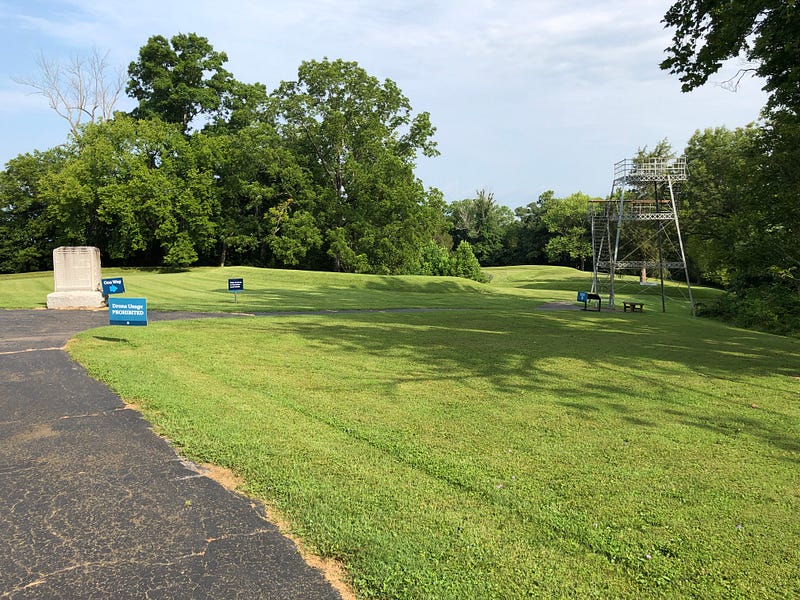
The largest serpent effigy in the world, this great serpent uncoils its seven coils atop a bluff near Brush Creek in Peebles, in Southern Ohio. Over 1400 feet long, this Native American effigy mound is the largest effigy mound in North America and was once likely taller, perhaps 5 feet high.
Climbing to the top of an old steel tower at the site gives you an overhead view of the serpent.
Its spiral three coiled tail is to the left, its head on the distant end of the coils to the right, with an Oval held in its open jaws, thought to be an egg or a frog.

Awesome in every sense of the word.
Ephraim Squier and Edwin Davis provided one of the earliest modern reports of serpent mound in their 1848 book for the Smithsonian Institution, Ancient Monuments Of The Mississippi Valley.
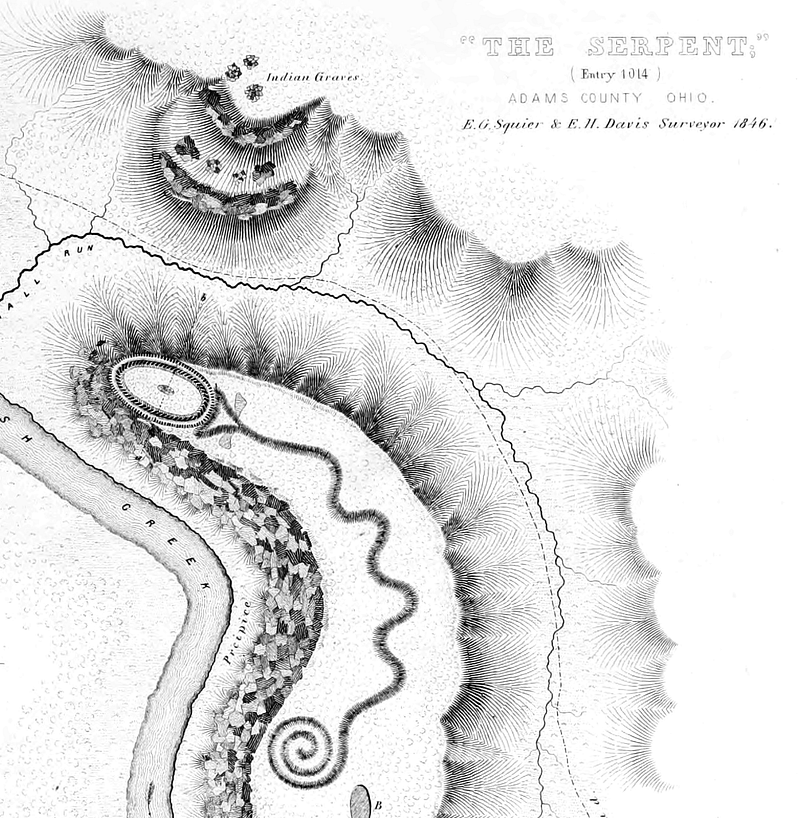
The Smithsonian was relatively new — the book was the Institution’s first publication, published as the first in their Contributions to Knowledge series.
Squier wrote at the time that serpent mound was little known outside its immediate area and “no plan or description has hitherto been published “. Now it’s a National Historic landmark.
A paved path follows the perimeter of the mound.
There’s also a hiking trail leading through the woods around the bluff.

The coils of the serpent mound are said to be astronomically aligned to sunrise on the equinoxes and solstices.
I decided to also check the coils’ alignments (with the sunseeker app) in the other direction, to the West, and found possible alignments to sunset on the equinoxes and winter solstice.
The head of the serpent points directly at the summer solstice sunset. Some lunar alignments have been suggested here as well.
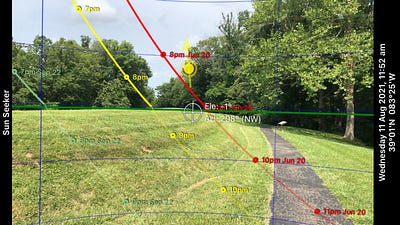
Down near the head, we can see how the Serpent’s “Jaws” open to encompass the Oval.
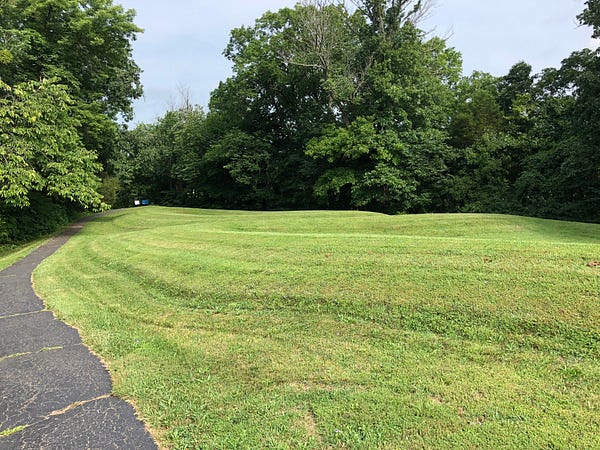
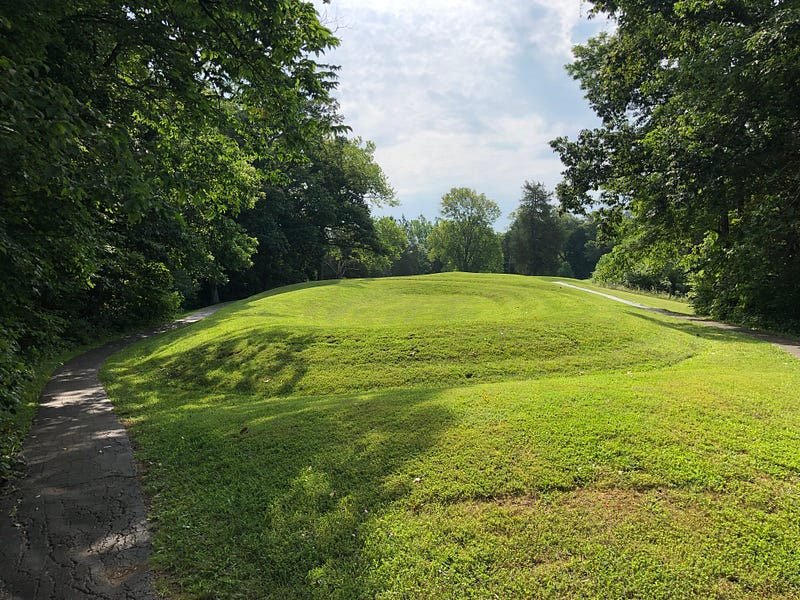
The serpent ends with its tail coiling around itself three times. Some suggests this means it’s a rattlesnake. The spiral design is curious. Universal.
Looking to see what else might be nearby, I checked out the woodland trail around the bluff and found the Creek below, and a small cave.
The cave was the most interesting thing along the bluff, but the large spider population prompted me to zoom in with my camera rather than climb up into it.
The trail eventually just seemed to end, so I retraced my way back up the bluff to the mound.
We have Harvard University’s Frederick Ward Putnam to thank for preserving serpent mound.

After finding it in the 1880’s and discovering it was threatened, he helped orchestrate the Peabody Museum’s purchase of the site, now in the hands of the Ohio History Connection.
How old is serpent mound? The answer is not settled. Some archaeologists favor dating that places its construction at around 1000 AD, with the Fort Ancient culture, Ohio’s contemporaries of the Mississippians who built Cahokia.
Newer and older evidence suggested an Adena origin, maybe as early as 250 BC. There are other mounds nearby. An Adena Mound’s excavation uncovered a copper breastplate, stone axes and points, and grooved pieces of sandstone. But, there are Fort Ancient mounds here too.
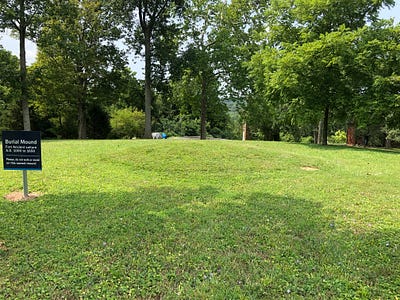
Though now a National Historic Landmark, Serpent Mound still isn’t that well known.
Like Cahokia, Serpent Mound seems to be “one of the best kept secrets in American history.” We are all too often unaware of the ancient history that happened all around us.
How is it these impressive ancient accomplishments of Native Americans are just ignored? How much has been lost? Erased? Ethnically cleansed? How much is still ignored right now? How much remains that we don’t even know are remains? Even the past known to us is left unheralded.
Perhaps stories like this one will help folks realize what is hiding in plain sight.


